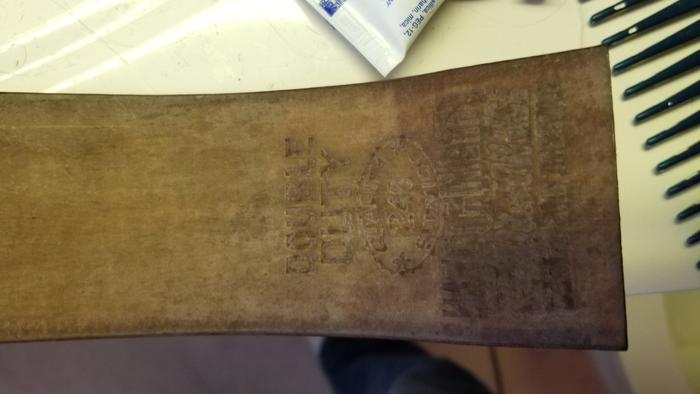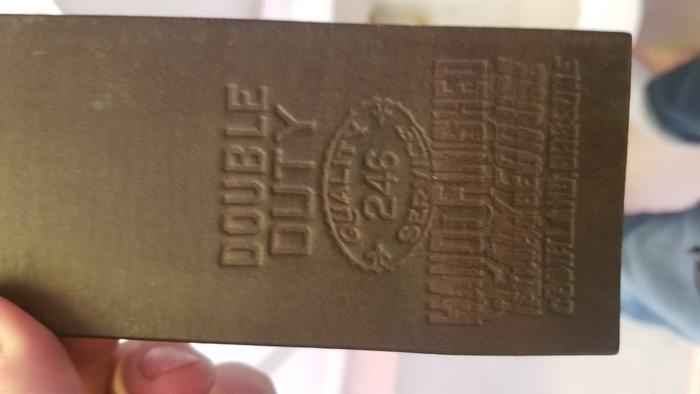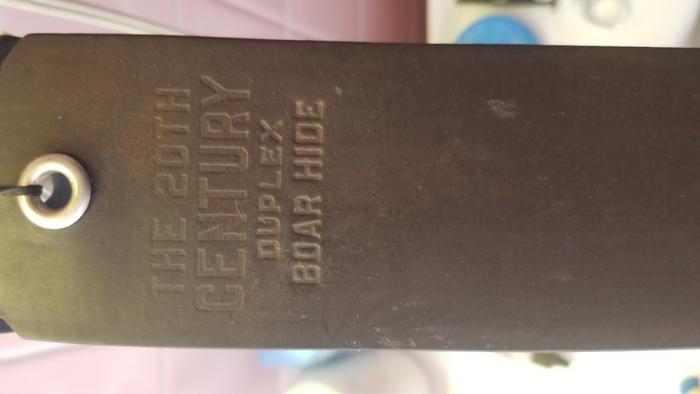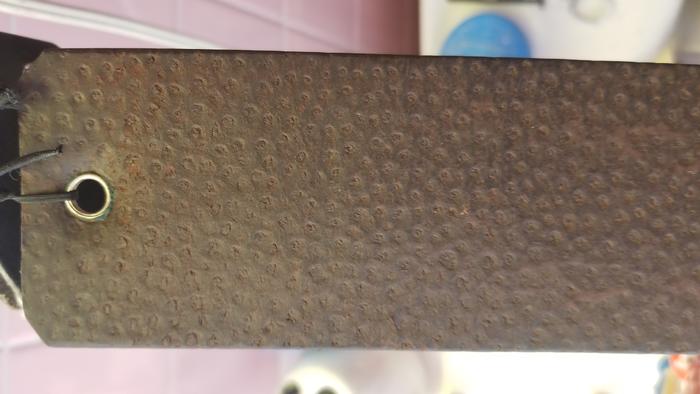Results 1 to 10 of 16
Hybrid View
-
03-02-2020, 10:20 PM #1Senior Member

- Join Date
- Feb 2016
- Location
- Pittsburgh, PA
- Posts
- 171
Thanked: 17 Restoring vintage strop, improving draw
Restoring vintage strop, improving draw
I have been restoring an old boar hide strop for a few months now. Bought it at antique store for $1, dirty as hell and stiff and dry as could be. Wanted to try resurrecting a vintage strop and end up with what I considered an uncommon material.
Started with good cleaning with arko shave soap thick lather and got all the dirt off. Been wiping with a damp sponge every other day or so to slowly rehydrate. Rub a few drops of neatsfoot oil in every couple weeks.
It looks good, leather is now flexible and supple, but the draw is still really glassy, like stropping on tile. Even just after oil or water when you'd expect it to be more grabby.
Does anyone have any advice on how to improve the draw? Was thinking of sanding with a high grit, or scotchbrite pad or something. Hate to ruin it at this point though.
Thanks.
-
03-02-2020, 10:27 PM #2Senior Member



- Join Date
- Apr 2012
- Location
- Diamond Bar, CA
- Posts
- 6,553
Thanked: 3215
Post some pics of the strop.
-
03-02-2020, 11:41 PM #3

I used to have a boar strap. It's mighty tough hide so you really can't get a soft effect on the surface minus chemical treatment however it still does it's job.
No matter how many men you kill you can't kill your successor-Emperor Nero
-
03-03-2020, 06:48 AM #4

Restoring strops is not easy.. For me at least.
I cleaned a shell strop a few years ago. It still hangs in the cupboard un-usable.
I would have thought slippy slidey would be better. Maybe add a suede piece. Then you can go with draw and then without..
-
03-03-2020, 09:40 PM #5Senior Member

- Join Date
- Feb 2016
- Location
- Pittsburgh, PA
- Posts
- 171
Thanked: 17
Here are some pics, one "before" and a few current ones. I think I'm gonna lay off the remoisturization efforts and concentrate on hand stropping and maybe some tallow soap to try to just liven up the surface.




-
03-04-2020, 09:44 AM #6

Wow. I really need to get to an antique store.
-
03-04-2020, 11:33 PM #7Senior Member

- Join Date
- Feb 2016
- Location
- Pittsburgh, PA
- Posts
- 171
Thanked: 17
Holy crap Euclid, that was thorough, thanks.
To be honest I was adding a bit more neatsfoot than a few drops, closer to what you are saying. A drop or 2 would get absorbed instantly with no ability to be spread. I used a bottle similar to a bingo dauber to apply to a dampened strop.
This is a lot longer, more painstaking, drawn-out process than I envisioned but it has also been rewarding thus far.
I have passed on alot of similar strops at flea markets and such in the past, I might not pass after this.
-
03-05-2020, 02:16 AM #8

Just posted my new finds along with a question about strop restoration and then saw this thread. Questions answered
Seems it is my lucky day
-
03-05-2020, 03:02 AM #9
 No matter how many men you kill you can't kill your successor-Emperor Nero
No matter how many men you kill you can't kill your successor-Emperor Nero
-
03-05-2020, 03:15 AM #10

On dry boarhide, I use mink oil without silicone and a little water. Over and over.
Takes forever, but you almost cannot ruin it as you can with the neetsfoot. JMO.
-
The Following User Says Thank You to sharptonn For This Useful Post:
32t (03-05-2020)


 49Likes
49Likes LinkBack URL
LinkBack URL About LinkBacks
About LinkBacks






 Reply With Quote
Reply With Quote

